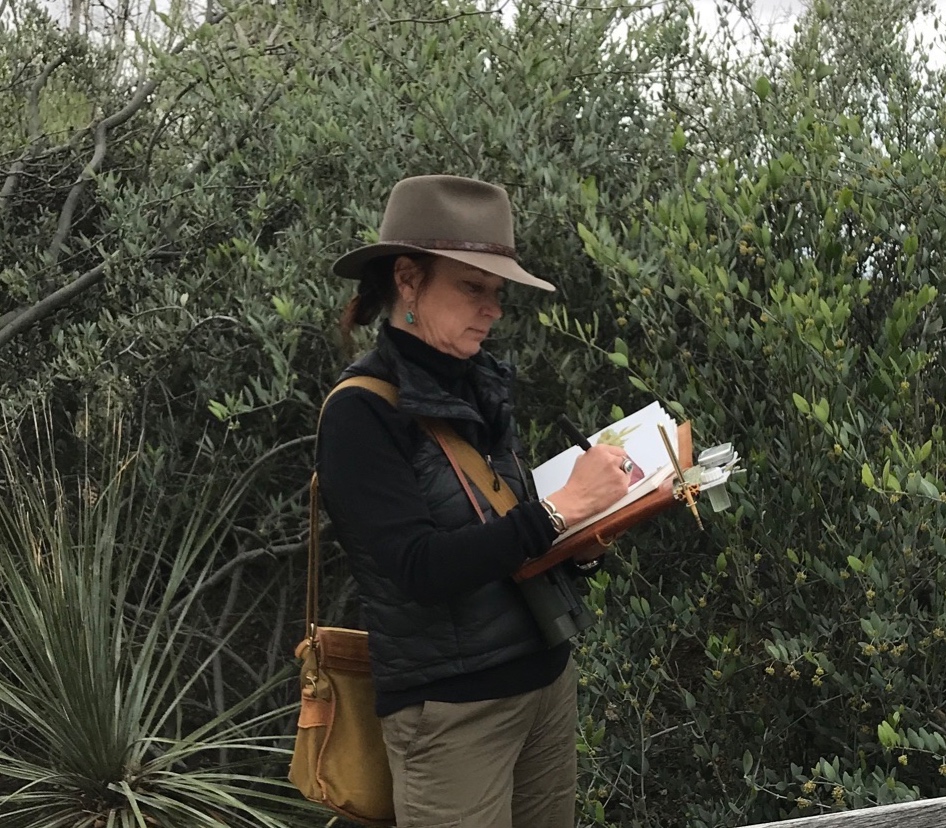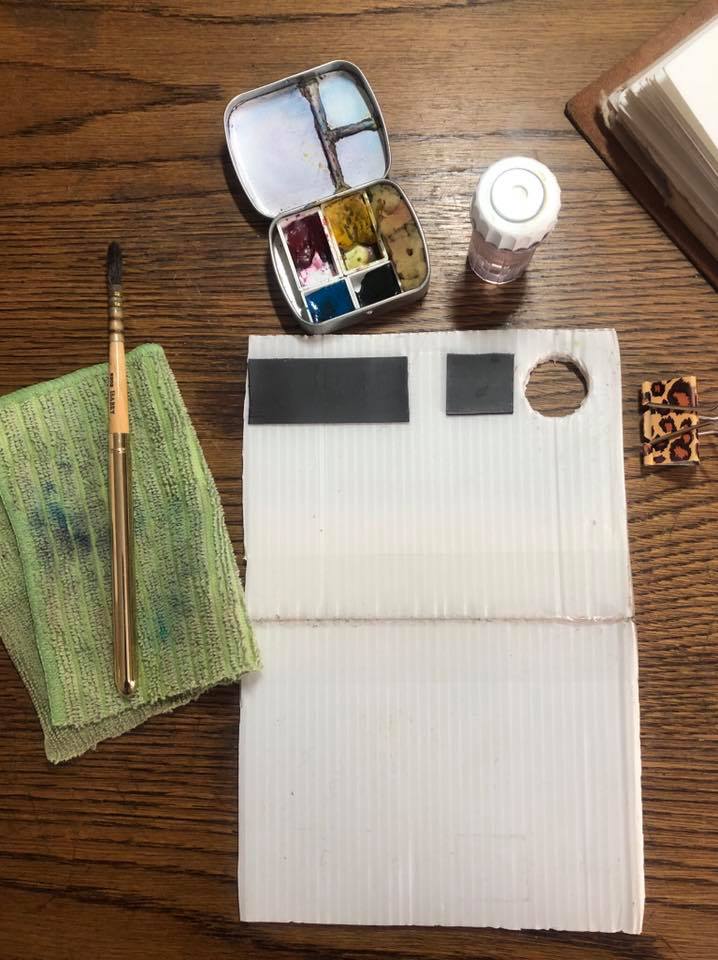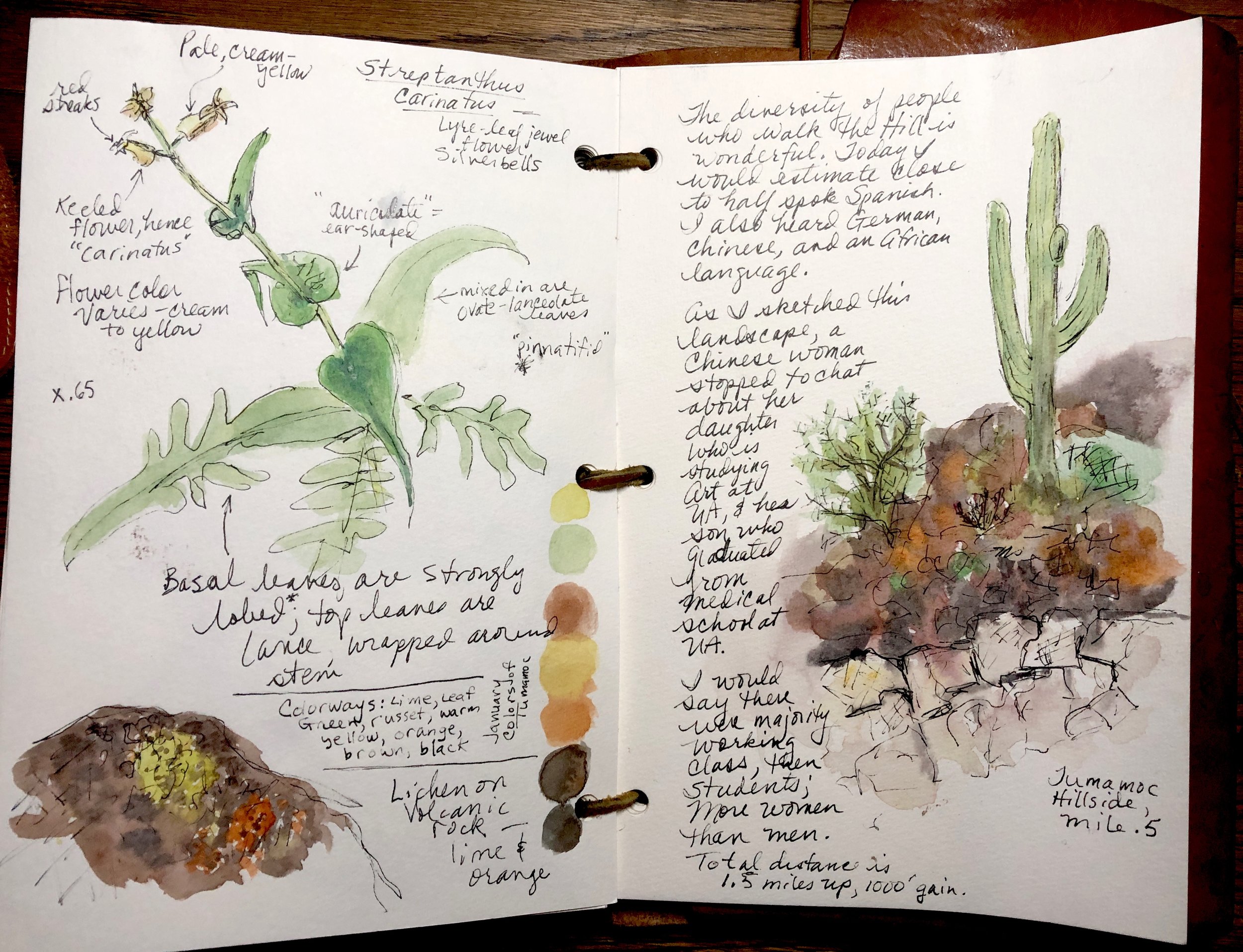Field Sketching Kit
Fellow nature journalers and plein air painters frequently ask about my “stand-up” field sketching kit. The evolution of my kit has been driven by:
Light weight (not getting any younger!);
Low volume (everything fits in my shoulder satchel); and most importantly,
Quick access—this is the key for me, since when I’m wandering around with the intent to take notes and sketch, if I have to get everything out every time I see something interesting, I’m likely to be lazy and skip it.
So my kit comprises the following:
Leather journal (see this post here for a description of this simple handmade journal and its paper and archival system);
A simple ultralight mini-easel cut from a coroplast sheet (this is corrugated signage plastic, available at office stores or Amazon) to fit inside the back of my journal.
I added flat tape-style magnets to hold the paint tin and the lid of my water bottle (glue a steel washer to the lid), to keep it from getting lost.
Cut a hole to hold the water bottle; make sure the fit is snug.
Water bottle is a container from a contact-lens-cleaning kit that uses peroxide solution. Pull or cut out the lens holder framework.
The paints are professional-grade watercolor from tubes, squeezed into full or half-pans. They fit into a mini mint tin and include three transparent primary colors (magenta, manganese blue genuine, and aureolin yellow) and a tint (shadow violet). I covered the lid of the tin with waterproof white stick-on label (Avery) and made separate wells with white caulking. [Update: I have since removed the shadow violet, switched to all half-pan sizes, and added a purple ochre, indanthrone blue, and burnt sienna, the latter two useful for more interesting and deeper blacks and grays; and the two earth pigments for ready-to-go dirt and rock colors—useful for my new work at Tumamoc Hill, which is very volcanic—see final image below.]
A lovely Isabey squirrel travel brush, which has a nice pointy tip and a decent-sized belly, so you can actually do washes even on a 9x6 page.
This setup has been working very well for me for a year now, and has increased my sketching time considerably, which of course also has meant an improvement in sketching skills.
If any readers have any of their mini / ultralight kits to share, please send them along!
My notebook and mini paint kit in its bag. The coroplast sheet shows the flat magnet tape that holds the paint tin and lid of the water bottle (I glued a steel washer to the lid). A spring clip holds my paint brush and secures a microfiber cloth. The coroplast “easel” lives in the back of the journal.
Journal spread done with the mini kit while walking up to the Desert Laboratory on Tumamoc Hill, Tucson, Arizona. The indanthrone blue + burnt sienna + purple ochre create the interest rock colors and textures quickly.






